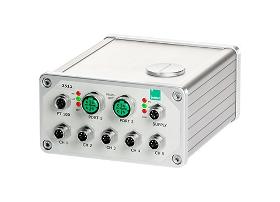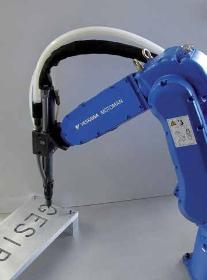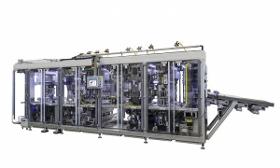- europages
- >
- COMPANIES - SUPPLIERS - SERVICE PROVIDERS
- >
- automatic multy
Results for
Automatic multy - Import export

BURSTER PRÄZISIONSMESSTECHNIK GMBH & CO KG
Germany
The All-in-One module 2511 is predestined for use in automated manufacturing testing of high-performance battery modules and battery packs, regardless of whether they are round, prismatic or pouch cells. In single or multichannel mode, important battery parameters such as AC and DC internal resistance or cell voltage can be recorded and evaluated extremely fast and precisely using fieldbus-capable technology in order to make quality-relevant statements regarding ageing .............. FEATURES AC and DC internal resistance measurement 10 … 300 mΩ Four-wire measurement method for highest precision Measuring and evaluation results in a few milliseconds Frequency ranges: 1kHz, 100 Hz, 10 Hz, 1 Hz Voltage measurement: 0 ... ±5 VDC/±60 VDC Temperature measurement: 0 °C … +100 °C Resolution: up to 0.01 μΩ Single to multi-channel applications, temperature measurement Extremely compact design, state-of-the-art interfaces PC software for intuitive parametrisation and configuration
Request for a quote
SFS GROUP GERMANY GMBH
Germany
Use by industry in robot-controlled applications Both versions of the GAV 8000 can be integrated into robot systems. Industrial robots are used almost everywhere in the production environment. They can be programmed to carry out various movements and can therefore be used highly effi ciently in combination with the GESIPA® rivet equipment. With the controlled, fast and secure production processes it is possible to achieve the following benefi ts by using a fully-automatic GAV combined with a multi-axle robot: • First rate precission • High effi ciency • Short cycle times • High fl exibility
Request for a quote
RIPPERT ANLAGENTECHNIK GMBH & CO. KG
Germany
With high-quality filter tubes and PTFE diaphragms. Paint dust filters Wet painting also results in overspray. Overspray is the solid portion of the paint that is not taken up by the workpiece. According to the purpose of use, the overspray is moist and sticky immediately after release. It is captured by the exhaust air stream in the spray booth and fed to a filter. This can be, for example, a baffle plate filter, paper filter, fleece filter, glass fibre filter or also combinations of these. The adhesive effect causes the paint particles to adhere to the contact surfaces of the respective filter medium, as a result of which a good degree of separation is achieved. However, all these filters are storage filters, i.e. the filters clog up more and more during operation and cannot be regenerated. A filter exchange becomes necessary if the exhaust air rate of the spray booth falls below the minimum. This can be very time-consuming under certain circumstances and the work process must be interrupted in order to do it. To make things worse, not only must the filtered and bound paint residues be disposed of, but also the actual filter materials. Such tooling times are not justifiable for automatic, continuous or multi-layer painting processes. Continuous procedures such as automatically cleaned filters are likewise required for this. The humidity and the adhesiveness of the particles to be filtered are thereby the problem. In order to solve this problem, the paint particles should be relieved of their adhesive capability as far as possible whilst still inside the paint booth. Our patented ‘RTS-Rotation’ system is outstandingly well suited for this. The system is comprised of slowly rotating brush rollers, which take up the adhesive paint particles on the surface of the bristles and allow them to dry there. The bristles are automatically regenerated at pre-specified time intervals by combing devices that swing in at the rear of the brush rollers. The dislodged paint residues can then be removed and disposed of either manually during work breaks or automatically during operation. The degree of separation of this system is, however, insufficient to satisfy the environmental protection requirements concerning residual dust content in the exhaust air. A further filter stage is necessary for that. It must be assumed that the paint particles arriving here are to a certain extent still damp and sticky. For this we use special paint dust filters with high-quality filter tubes with PTFE diaphragms. If necessary, precoating agents (auxiliary dust) are used in order to neutralise the adhesive capability of the particles and to keep the dust layer on the filter elements permeable to air. The precoating agent is injected into the raw air pipe by means of special dosing units. The filter tubes are cleaned by means of compressed air impulse cleaning. The use of this technology requires special know-how. We have had the appropriate experience for almost ten years. The implemented plants have capacities ranging from 5,000 to 90,000 m³ /h. Because of the large number of different paint systems, individual experiments are usually necessary in our pilot plant in order to find the correct solution for the individual case.
Request for a quote
OPTIMA CONSUMER GMBH
Germany
Characteristics: - Packaging material flexibility - High precision portioning for constantly good beverage taste - High levels of line efficiency - Modules with servo drive for low-noise packaging operations - Ideal access for cleaning or maintenance - High level of flexibility due to modular construction and servo drives - Process lanes can be switched off separately Capsules: - Cylindrical shape - Bulk goods for sorting and fully automatic feeding - Multi-lane transport - Gentle processing of packaging material - High operational safety Basic function of the packaging machine: - Capsule transport on up to 12 lanes for high performance - High precision portioning via auger filler - Flexible product compaction with servo press - Closing with self-monitoring ultrasonic sealing - Check after each processing step
Do you sell or make similar products?
Sign up to europages and have your products listed
Results for
Automatic multy - Import exportNumber of results
4 ProductsCountries
Company type